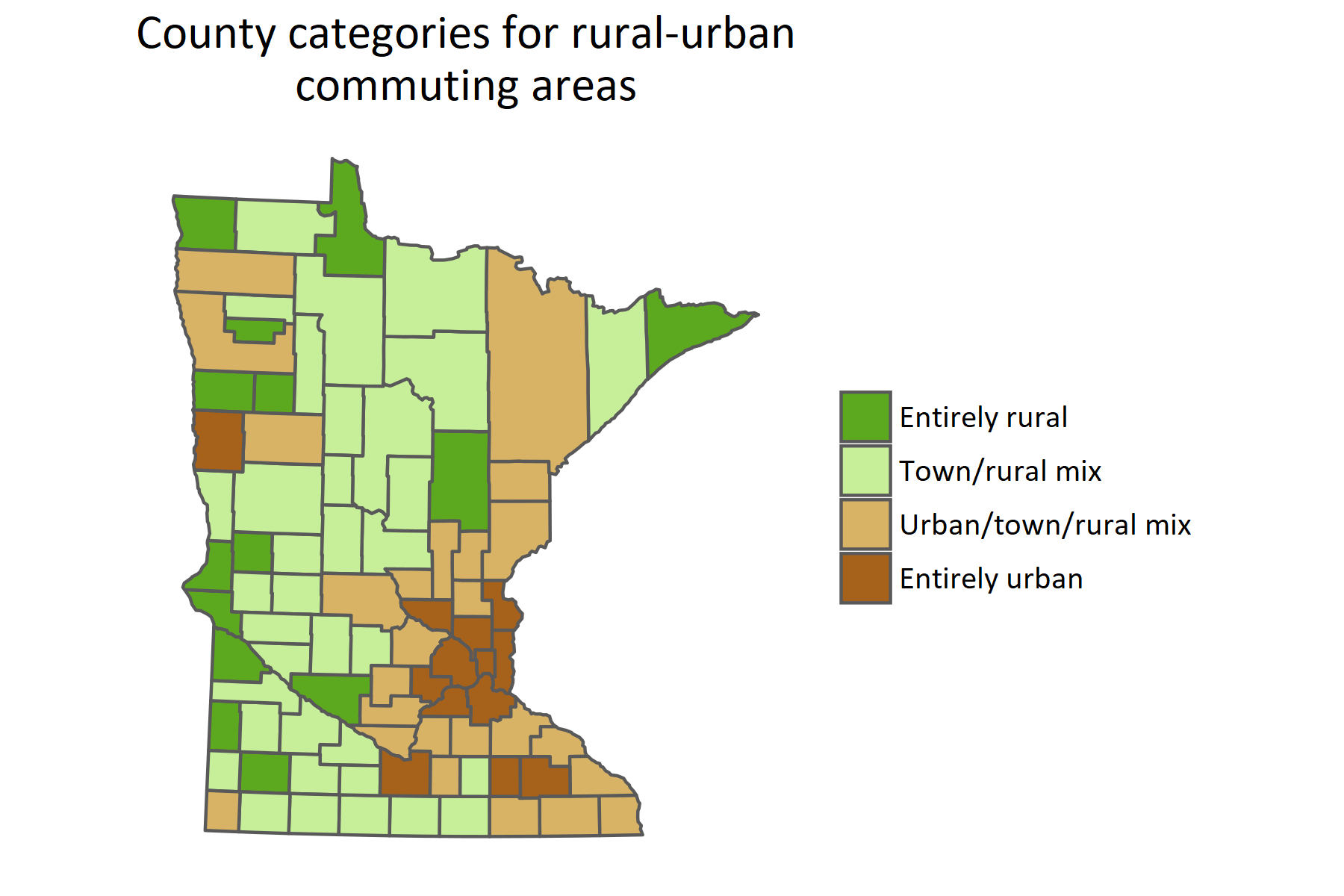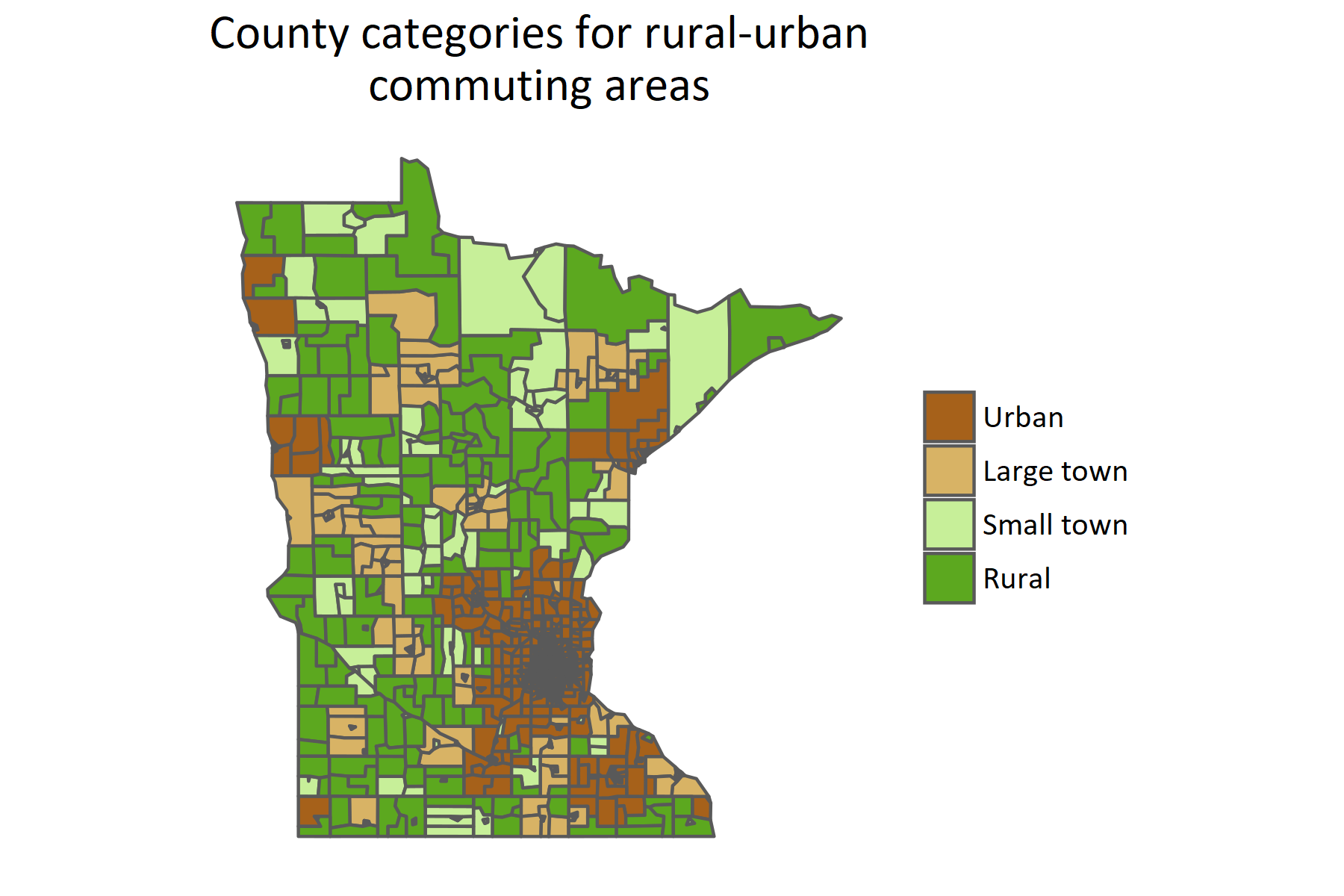February 2019
By Kelly Asche, Research Associate
We frequently use county categories to help determine the “rural-ness” and “urban-ness” of counties across Minnesota. The 4 county categories are derived from the Rural-urban commuting area codes that were first used by Minnesota’s Demographic Center. The map below shows how each county is categorized.

These county groups are derived from the rural-urban commuting area codes developed by the United State Department of Agriculture – Economic Research Service in an attempt to define geographic areas not entirely reliant on population alone. These codes incorporate population density, urbanization, and daily commuting to define a geographic area. Below is the 10 primary RUCA codes, which are also grouped into the 4 geography types.
Urban Definition
| 1 | Census tract is situated at the metropolitan area’s core and the primary commuting flow is within an urbanized area of 50,000 residents or more |
| 2 | Census tract is within a metropolitan area and has higher primary commuting (30% or more) to an urbanized area of 50,000 residents or more |
| 3 | Census tract is within a metropolitan area and has lower primary commuting (10-30%) to an urbanized area of 50,000 residents or more |
Large Town Definition
| 4 | Census tract is situated at a micropolitan area’s core and the primary commuting flow is within a larger urban cluster of 10,000 to 49,999 residents |
| 5 | Census tract is within a micropolitan area and has higher primary commuting (30% or more) to a larger urban cluster of 10,000 to 49,999 residents |
| 6 | Census tract is within a micropolitan area and has lower primary commuting (10-30%) to a larger urban cluster of 10,000 to 49,999 residents |
Small Town Definition
| 7 | Census tract has a primary commuting flow within a small urban cluster of 2,500 to 9,999 residents |
| 8 | Census tract has higher primary commuting (30% or more) to a small urban cluster of 2,500 to 9,999 residents |
| 9 | Census tract has lower primary commuting (10-30%) to a small urban cluster of 2,500 to 9,999 residents |
Rural Definition
| 10 | Census tract has a primary commuting flow outside of urban areas and urban clusters. |
Below is a map that presents each census tract throughout Minnesota and their corresponding RUCA definition

The Minnesota State Demographer’s office analyzed each county to determine the combinations of census tract types in each one. The counties were then categorized into 4 groups:
- Entirely rural: every census tract was rural;
- Town/rural mix: the county had at least one census tract that was rural, and small or large town census tracts;
- Urban/town/rural mix: the county had at least one census tract that was rural, small or large town, and urban;
- Entirely urban: every census tract was urban.
For more information about these definitions check out their report – Greater Minnesota: Refined & Revisited
